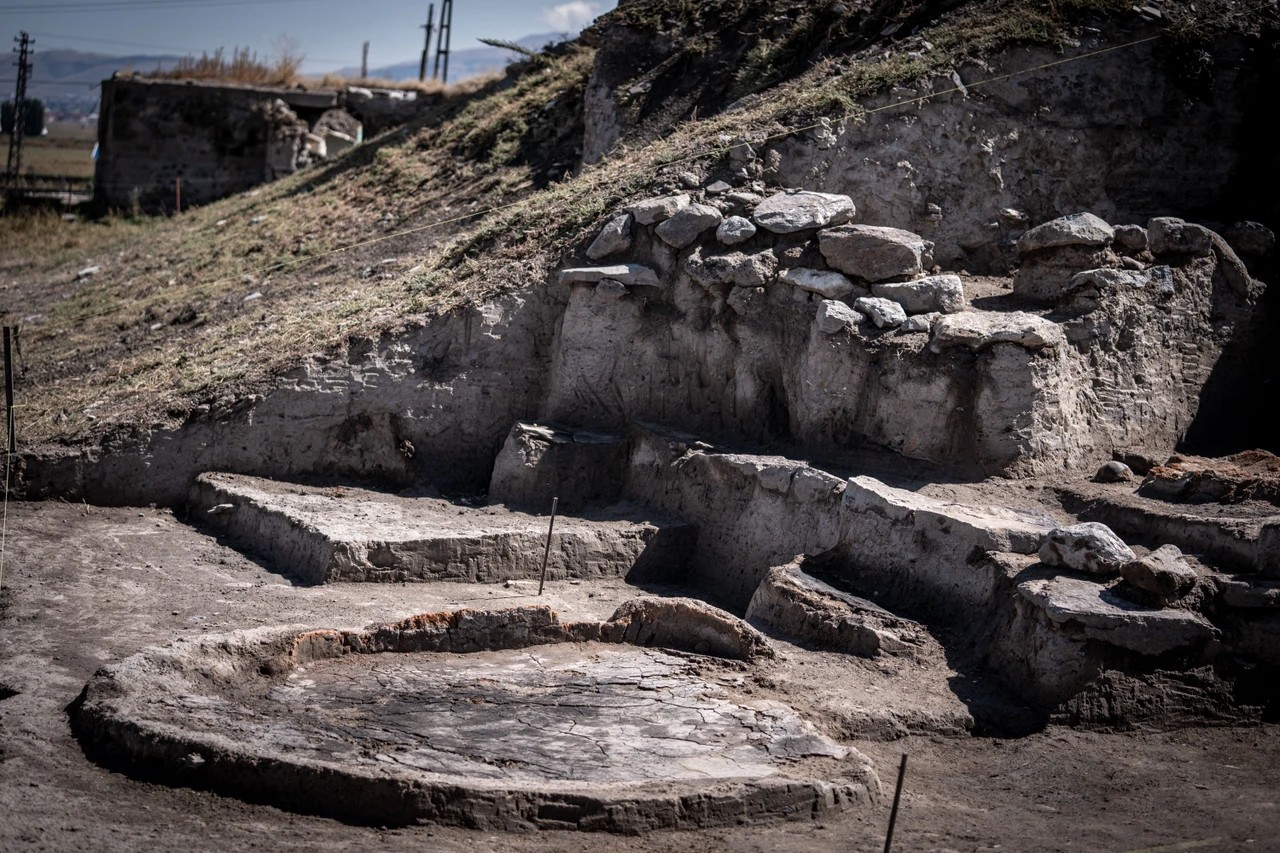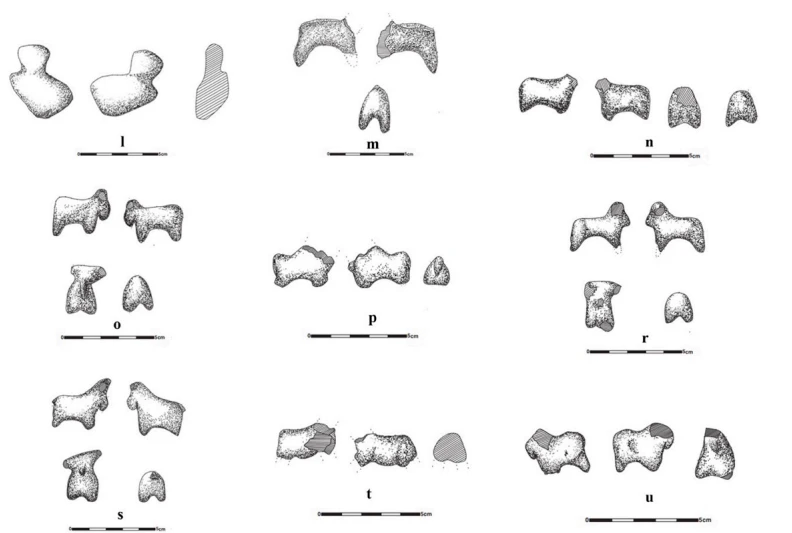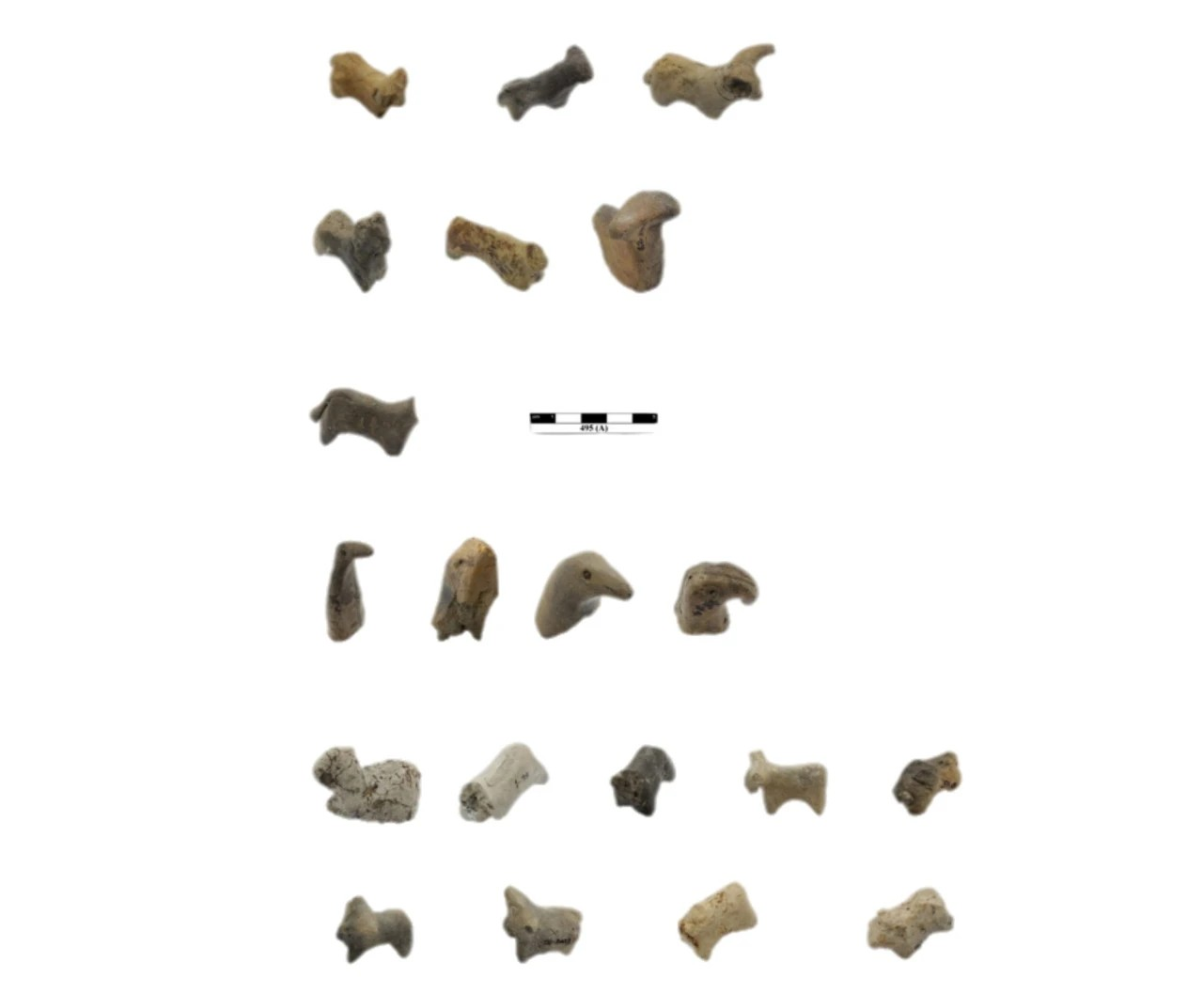The Sacred Fire and Symbols of the Spirit in the Karaz Culture
Aerial imagery of Pulur Höyük in Erzurum, Turkey, combined with terracotta animal figurines from the Karaz culture, is shedding light on a little-known civilization whose artifacts carry profound cultural and spiritual meaning.
At the Erzurum Archaeology Museum—located in what was once the ancient city of Theodosiopolis—researchers have conducted a captivating study on 20 animal figurines dating back to the Karaz culture. These remarkable artifacts, unearthed from early excavations at Pulur Höyük, Guzelova Höyük, and Sos Höyük, depict a range of creatures, including bulls, rams, sheep, birds, and other yet-to-be-identified species.
A Glimpse into a Forgotten World
Ongoing archaeological excavations at Pulur Höyük in Erzurum continue to reveal 7,000-year-old traces of ancient life. (Photo: AA)
The study, led by Rabia Akarsu and Elif Şener, highlights the cultural and spiritual significance of these miniature creations, dating from the Late Chalcolithic to the Early Bronze Age. Ongoing excavations at Pulur Höyük continue to reveal 7,000-year-old traces of life, offering a rare window into prehistoric societies.
A Civilization Bridging Regions
The Karaz culture—also known as the Kura–Araxes culture—once spanned a vast area: from the Caucasus Mountains and the eastern Mediterranean to the shores of the Caspian Sea and the plains of Central Anatolia. It flourished during the 4th and 3rd millennia BCE.
While findings from Pulur and Guzelova remain somewhat inconclusive, the Sos Höyük site has offered more stratigraphic clarity. Radiocarbon dating confirms the antiquity of the artifacts, affirming their importance in understanding the era.
Unidentified animal figurines. (l: Güzelova Höyük, m–p: Sos Höyük). (Illustration by Buket Besikci Akdoğan).
According to researchers, these artifacts are not just remnants of material culture. They offer insights into the social structures and spiritual beliefs of the ancient people who created them.
Ritual Tools, Totems—or Toys?
“The terracotta figurines may have served a wide range of purposes,” the study explains. “They could have been children’s toys, educational tools used by adults, protective amulets, keepsakes for the dead, or part of religious rituals.”
Since these communities predated written language, identifying the exact function of the figurines remains challenging. However, their placement around hearths in ancient settlements strongly suggests ceremonial or religious significance.
Sacred Fire and Spiritual Animals
The symbolic role of fire and hearths in Karaz society appears central to their belief system. “Fire had a sacred meaning, and the animal figurines likely held spiritual significance,” the study notes.
Terracotta animal figurines unearthed during excavations at Pulur Höyük, Guzelova Höyük, and Sos Höyük. (Photo: Sedat Yilmaz)
Domesticated animals like rams, sheep, and bulls—vital to survival—seem to have been key figures in their spiritual and agricultural belief systems. Their importance is echoed in the placement of figurines within temple spaces. For instance, at Pulur-Sakyol Höyük, bird-shaped vessels were discovered in a temple area, highlighting a symbolic realm that remains largely unexplored.
Birds: Symbols of the Spirit
While the symbolic meaning of birds in the Karaz culture is not fully deciphered, the study draws parallels with earlier traditions. “In Paleolithic rock art and Neolithic temple decorations, bird motifs often symbolize the soul and spiritual rebirth,” the researchers explain.
The consistent appearance of similar figurines across the Karaz cultural region suggests shared religious beliefs and robust cultural interaction between prehistoric communities.
Who Were the Karaz People?
The Karaz culture—named after the distinctive black and red pottery found at sites like Karaz in eastern Turkey—emerged during the Early Bronze Age, around the late 4th to 3rd millennium BCE. First identified in 1941 by Soviet archaeologist Boris Kuftin, the culture is also referred to as the Kura–Araxes civilization.
Its influence stretched from the mountains of the northern Black Sea and the Transcaucasus to the southern shores of Lake Urmia in Iran, extending west to areas like Divriği–Kangal and Malatya–Elazığ in Turkey, and as far south as Kahramanmaraş, the Amuq Plain, and possibly even Palestine.
Today, the cultural footprint of the Karaz people spans modern-day Georgia, Armenia, Azerbaijan, eastern Turkey, and parts of northwestern Iran.










